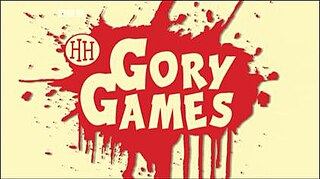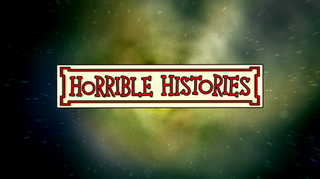
Scholastic Corporation is an American multinational publishing, education, and media company that publishes and distributes books, comics, and educational materials for schools, teachers, parents, children, and other educational institutions. Products are distributed via retail and online sales and through schools via reading clubs and book fairs. Clifford the Big Red Dog, a character created by Norman Bridwell in 1963, is the mascot of the company.

Goosebumps is a series of children's horror novels written by American author R. L. Stine. The protagonists in these stories are teens or pre-teens who find themselves in frightening circumstances, often involving the supernatural, the paranormal or the occult. Between 1992 and 1997, sixty-two books were published under the Goosebumps umbrella title. R. L. Stine also wrote various spin-off series, including, Goosebumps Series 2000, Give Yourself Goosebumps, Tales to Give You Goosebumps, Goosebumps Triple Header, Goosebumps HorrorLand, Goosebumps Most Wanted and Goosebumps SlappyWorld. Additionally, there was a series called Goosebumps Gold that was never released.

William Terence Deary is a British children's author of over 200 books, selling over 25 million copies in over 40 languages, best known as the writer of the Horrible Histories series. Since 1994 he has been one of Britain's best-selling authors. In 2012, he was the tenth most-borrowed author in British libraries, and was voted Outstanding Children's Non-Fiction Author of the 20th Century by Books for Keeps magazine.

Philip Reeve is an English author and illustrator of children's books, primarily known for the 2001 book Mortal Engines and its sequels. His 2007 novel, Here Lies Arthur, based on the legendary King Arthur, won the Carnegie Medal.

Harry Potter is a series of seven fantasy novels written by British author J. K. Rowling. The novels chronicle the lives of a young wizard, Harry Potter, and his friends, Hermione Granger and Ron Weasley, all of whom are students at Hogwarts School of Witchcraft and Wizardry. The main story arc concerns Harry's conflict with Lord Voldemort, a dark wizard who intends to become immortal, overthrow the wizard governing body known as the Ministry of Magic, and subjugate all wizards and Muggles.
Deltora Quest is the collective title for three distinct series of children's fantasy books, written by Australian author Emily Rodda. It follows the adventures of three companions as they journey across the fictitious land of Deltora, endeavouring to recover the seven gems stolen from the magical Belt of Deltora and defeat allies of the evil Shadow Lord. The series was first published in Australia in 2000 and has since been published in more than 30 countries. The series has sold over 18 million copies worldwide, including over 2 million in Australia. It is published by Scholastic in Australia and the United States. In most countries, the series is illustrated by Marc McBride.
Nick Arnold is a British writer of science books for children. He is best known for the long series Horrible Science, illustrated by Tony De Saulles, and the short series Wild Lives, illustrated by Jane Cope. His other works include some published under the name Robert Roland.
Horrible Histories is an educational entertainment franchise encompassing many media including books, magazines, audio books, stage shows, TV shows, and more.

Horrible Histories: Ruthless Romans is a 2009 educational adventure video game theme on Ancient Rome as part of the Horrible Histories franchise, which began in 1993. The game was released on Wii, Nintendo DS and Windows and is narrated by Terry Deary, the author of the Horrible Histories book series. It is named after Deary's 2003 book Ruthless Romans, his second on the topic after 1999's Rotten Romans.

Horrible Histories is an animated children's television series based on the Terry Deary book series of the same name. The series ran for 26 episodes that aired between December 19, 2000 and November 14, 2001.

Horrible Histories: Gory Games is a children's game show, co-produced by Citrus Television and Lion Television for CBBC, that debuted in 2011. It is a spin-off of hit children's sketch comedy Horrible Histories and is a product of the same creative team.

Horrible Histories is a multi-award-winning British children's live-action historical and musical sketch comedy television series, based on the bestselling book series by Terry Deary. The show focuses on the dark, gruesome or scatological aspects of British and other Western world history, spanning from the Stone Age to the post-World War II era. Now in its 11th series, it is produced for CBBC by Lion Television. It was produced in association with Citrus Television from series 3 to 5. The series began airing in 2009, with more than 160 episodes over the 11 series. It changed format and cast in 2015.
There has been more than one Horrible Histories Prom in the BBC's annual Proms concert series. The Horrible Histories entertainment franchise is aimed at children, and these concerts have introduced children to classical music.
The Mad Millennium is a Horrible Histories musical play written by Terry Deary and first performed in 1999. The play is about 7 kids in a history lesson with a new history teacher and their only hope is to race through the centuries. It is the only HH play written into a published book - The Mad Millennium: A Play by Terry Deary.
Frightful First World War was an exhibition that was held at the Imperial War Museum North from 24 May 2008 to 4 January 2009. It was based on the Horrible Histories book of the same name – one of the most popular of the series. It was produced in partnership with Terry Deary and Scholastic Children's books. The exhibition was free.
Horrible Histories: Terrible Trenches is an exhibition created in 2009 as part of the Horrible Histories franchise. It is about "life in the terrible trenches during the First World War", and debuted at the Imperial War Museum. It lasted from 18 July 2009 to 31 October 2010.
Rotten Rationing Big Picture Show is a 2013 Horrible Histories exhibition based on the children's history book series, Horrible Histories, originally written by Terry Deary and illustrated by Martin Brown, which explores the life and times of World War II. The exhibition, created in partnership with Scholastic, ran at the Imperial War Museum North in Greater Manchester from 2013 to 17 May 2015.
Peter Hepplewhite is a British author. He is most well known for the Horrible Histories title The Awesome Egyptians which he co-authored with Terry Deary. However he has written many other children's history books, often co-writing with his long-time writing partner Neil Tonge.
Horrible Histories: Live on Stage is the name for a series of stage shows within the Horrible Histories franchise. They are produced by The Birmingham Stage Company.










